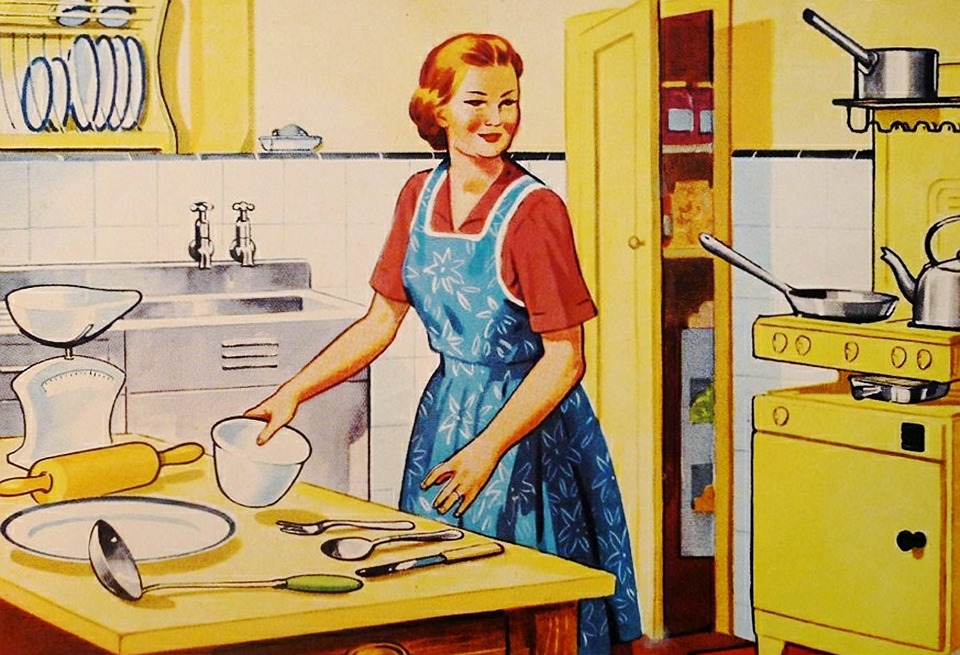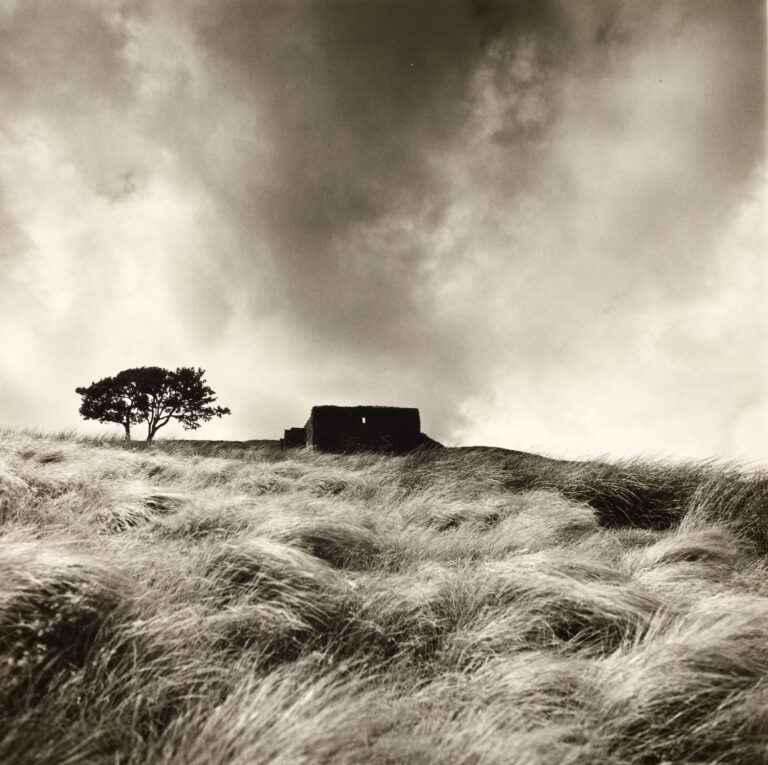The Power of the Vignette in Mrs. Bridge

Mrs. Bridge, published in 1959, is a classic American novel about the misunderstandings and alienation of an incurious housewife living in Kansas City during the interwar years. In lieu of the classic chapters-based format, however, author Evan S. Connell wrote 117 vignettes, which are presented chronologically. These neat, linear images function in several ways: as a social critique of the era’s lust for conformity, as an aesthetic choice representing the psychology of his protagonist, and as an attempt to explicate time’s relationship to a forward-looking, consumptive lifestyle—all of which make the book interesting and relevant today, over sixty years later.
The word vignette comes from the Old French diminutive of vigne, meaning little vine. Vignes first appeared in the literary world during the late thirteen century, when they were drawn like garland on the borders of early manuscripts; they increased a book’s value, added to its beauty, and, in many cases, proved illustrative, enhancing a reader’s understanding of the text. Nowadays, Merriam-Webster defines a vignette as “a short descriptive literary sketch” or, in relation to photographs, “a picture that shades off gradually into the surrounding paper.” All three definitions are appropriate in thinking about Connell’s story of Mrs. Bridge, a woman who circumvents any kind of holistic reflection and instead focuses on appearances and order. Mrs. Bridge compartmentalizes her life, checking off both the big and small events with equal regard like one of those daily housekeeping schedules that were so popular with women of her era. Connell’s structure mimics this compartmentalization and circumvention. In fact, each vignette is titled much like a check-list: “Children,” “Change of Itinerary,” “Psychotherapy,” “Carolyn’s Engagement.” Other vignette titles seem less significant at first glance—“Victim of Circumstances,” “Frayed Cuffs,” “Late for Dinner”—but their subjects are ultimately treated in the same, perfunctory way. Thus, the novel’s structure does not suggest any one part of Mrs. Bridge’s life is more significant than the other, nor deserving of greater reflection.
The novel begins with India (no maiden name provided) meeting and deciding to marry Mr. Bridge; it proceeds, somewhat uneventfully, through her childbearing years and into her old age. Early on we learn that “appearances were an abiding concern of Mrs. Bridge,” and that “nice manners . . . pleasant dispositions . . . and cleanliness . . . were qualities she valued above all others.” Clean, manned, and pleasant descriptions are also a way to describe the vignettes themselves. While the novel is not told in first-person point of view (it vacillates between close and distant third), it is still very much Mrs. Bridge’s story, emphasized by the structure that is so similar to her state of mind. We are with Mrs. Bridge as she shops, keeps house, and ogles material goods.
In the afterword, James Salter reveals that Connell initially attempted to write the novel in a traditional form, but he “finally abandoned the effort in favor of something that more closely conformed to life as he knew it.”
A mother of three children, it’s Mrs. Bridge’s son Douglas, her youngest, who first challenges, what we would call today her “lifestyle.” Douglas is described as the most introspective of the children. In “Tower,” Douglas does “a peculiar thing” when he constructs a high tower out of rubbish in a vacant lot near the family’s house. At first, Mrs. Bridge is unconcerned. Douglas steals a bag of powdered cement, raids the city dumb, and collects all sorts of stones, tins, cans, and bottles from the neighborhood. Though his materials are hodgepodge, Douglas is precise and disciplined with his work. The tower grows bigger and bigger. A man at a cocktail party tells Mrs. Bridge that it’s “a curious form of protest.” Mrs. Bridge cannot understand why her son would be so conspicuous, why he would build something so chaotic and unsightly. More importantly, she doesn’t try to understand it. Eventually, she calls the fire department while Douglas is at school and has the tower torn down. Upon his return, she tells him, “People were beginning to wonder.” She and Douglas never have the same relationship again. Mrs. Bridge sacrificed a real, messy relationship for order.
We can consider Douglas’s tower a nod to a different kind of novel, one that includes more wander and more questions by its protagonists: Richard Yates’s Revolutionary Road. Comparing the two, we see that unlike Connell, Yates chose a traditional chaptered structure for his novel. Yates’s novel is more akin to Douglas’s tower—while his prose is restrained, his protagonists, April and Frank Wheeler of Connecticut, waver between their adherence to and disgust with the rituals of 1950s suburban domesticity. April and Frank are hypocritical, reflective, argumentative, and anxiety-ridden. Confronting their ennui, they decide to take the kids, sell their house, and move to Paris (although the trip doesn’t come to fruition). The Bridges, meanwhile, twelve-hundred miles away, never reach the confrontation stage. The vignette’s linear, unrelenting form won’t let them, and neither will Mrs. Bridge’s psyche. While both novels possess wisdom and cultural verisimilitude, only Connell’s work, vis-à-vis its form, provides the nearly-intolerable experience of an entire life lived in denial of reflection and positive action towards change.
There are a handful of incidents where Mrs. Bridge nearly breaks form. About a quarter into the novel, in “Sentimental Moment,” Mrs. Bridge “stirred uneasily” as she realized that “surely some time had gone by”; while she had originally thought her husband’s late hours were a “temporary condition . . . this was not the way it turned out . . . Mrs. Bridge now understood she would never see very much of him.” Moreover, she admits she has “too much leisure time.” She alludes to all the chores that keep her busy, that must keep her busy, but as she is ruminating, Mr. Bridge arrives home. Her introspection ceases immediately: “She turned swiftly from the window and hurried toward him with an intent, wistful expression, knowing what she wanted without knowing how to ask for it.” It’s a heart-wrenching scene for any reader in the twenty-first century, full as we are with hindsight about that era and its repression. (Since we spend most of our time with Mrs. Bridge, we don’t get much of Mr. Bridge. To provide us with more on this character, Connell published Mr. Bridge in 1969; it is every bit as good as Mrs. Bridge, and is also written in the vignette form.)
Late in the novel and late in Mrs. Bridge’s life, she is at her dressing table spreading cold cream on her face; while thinking about how to “occupy” the next day, “the swift cool touch demoralized her so completely that she almost screamed. She continued spreading the cream over her features, steadily observing herself in the mirror, and wondered who she was . . . rapidly, soundlessly, she was disappearing into white, sweetly scented anonymity.” But Mrs. Bridge is not theatrical. She is not April Wheeler, or Emma Bovary, or Nora Helmer. Connell continues, “Gratified by this she smiled, and perceived a few seconds later that beneath the mask she was not smiling. All the same, being committed, there was nothing to do but proceed.” As if taking a cue from his protagonist, that is what Connell does with his form. The last vignettes do not bring any significant shift in Mrs. Bridge’s behavior, nor does she try to break her indenture with the forms of her time.
There’s a scene in Wharton’s The Age of Innocence where Newland Archer is thinking about how it would “be his task to take the bandage from [his fianceé May Welland’s eyes], and bid her look forth on the world.” But then Newland shivers and recalls a “Kentucky cave-fish, which had ceased to develop eyes because they had no use for them. What if, when he had bidden May Welland to open hers, they could only look out blankly at blankness?” Living more than a half-century later, Mrs. Bridge has eyes to see the world; she can do so many things that May Welland couldn’t, but she insists on blankness. She prefers The Tattler, a society rag that some call the original social media, over books, the news, and learning new skills. She is gifted Spanish records, but never commits to learning the language. When she and Mr. Bridge travel to Europe, they are sitting in an Italian café the day Hitler invades Poland, but when they return to Kansas, Mrs. Bridge tells her friends, “she really had no idea what was going on . . . she could not honestly give an opinion. She felt more sure of herself when asked about the sights they had seen.” If we’ve learned anything from these novels, it’s not that Americans invented materialism and ennui, but that certainly we’ve perfected it. Mrs. Bridge’s consumptive, appearance-obsessed nature might not take the same form as May Welland’s, but there’s a thin line that connects these two women, and there’s a line that connects both of them to us now, in our age of virtual signaling, compartmentalization, and optimization. Ours is only a new iteration of acceptable blankness and incessant proceeding.
This piece was originally published on February 17, 2021.


